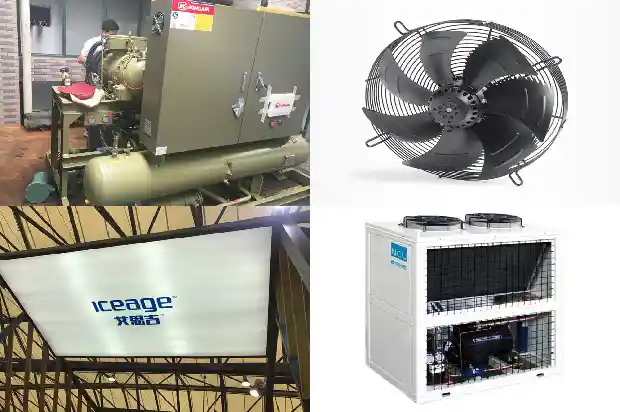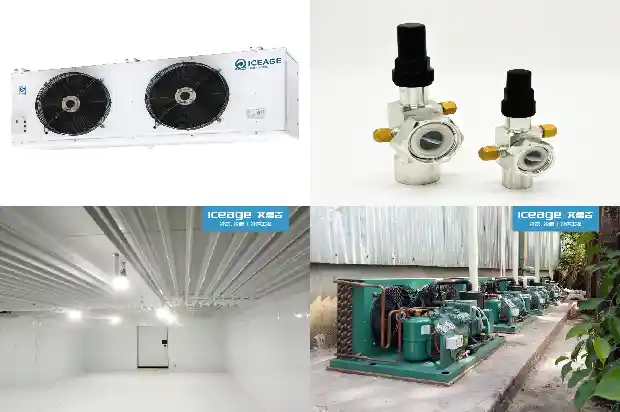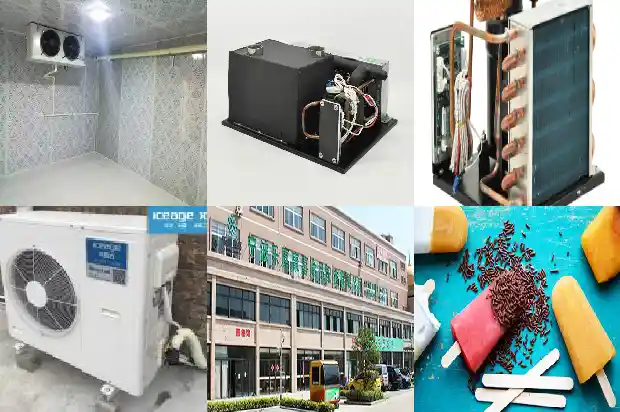How to Properly Extract Ammonia Refrigerant during Refrigeration Parts Repair
2025-01-08
During the repair of a refrigeration unit, if there is a fault in the components of the system from the compressor discharge shut-off valve to the outlet valve of the liquid receiver and disassembly and repair are required, in order to reduce environmental pollution and waste, the refrigerant should be removed and stored in another container. In addition, if the refrigeration device is out of use for a long time, to prevent leakage or due to reasons such as the need to change the refrigerant, the refrigerant also needs to be removed. The correct steps to remove ammonia refrigerant are as follows:
- Before Operation
First, prepare all tools and emergency supplies before the operation, such as ammonia tanks or a certain number of ammonia cylinders, a weighing scale, connecting pipes, fitter tools, gas masks, rubber gloves, and first - aid medicines. Then adjust the relevant valves of the system, close the liquid supply valves to the low - pressure equipment and evaporator, start the compressor to pump the ammonia liquid in the low - pressure system to the condenser and high - pressure liquid receiver. Place the ammonia cylinder upright on the weighing scale, and use a high - pressure rubber hose (with a pressure resistance of over 3MPa) and a pipe joint to connect the empty ammonia cylinder to the ammonia discharge pipe of the ammonia charging station. The connection should be secure. Slightly open the ammonia discharge valve at the ammonia charging station to check the tightness of the ammonia discharge pipe and joints. Open the pressure - reducing valve at the ammonia charging station to reduce the pressure of the ammonia tank or cylinder, then close the pressure - reducing valve and open the ammonia discharge valve to discharge ammonia into the ammonia cylinder or tank. - Weighing the Ammonia Tank
Secondly, weigh the ammonia tank into which ammonia has been discharged.
Under normal circumstances, it should not exceed 60% of its capacity. When the specified amount is reached, promptly close the ammonia cylinder valve and the liquid valve at the ammonia charging station, open the pressure - reducing valve at the ammonia charging station to evacuate the liquid in the ammonia discharge pipe, close the pressure - reducing valve, and slowly remove the cylinder connection pipe and replace it with a new cylinder. When the ammonia tank reaches the required amount, first close the ammonia tank valve, open the pressure - reducing valve at the ammonia charging station, pump out all the ammonia liquid in the pipe, close the pressure - reducing valve, and remove the connection pipe. If the suction pressure of the refrigeration compressor is too low, the cold storage door can be opened to increase the storage temperature, which will increase the evaporation amount of ammonia, and the suction pressure of the machine can rise. The low - pressure system can be pumped to 0.
05MPa (gauge pressure). After the machine stops, if the pressure rises, the machine can be started again for evacuation. To facilitate the condensation of ammonia, the condensing pressure can be made a bit higher, for example, it can be controlled between 1.3 - 1.
4MPa (gauge pressure).
- End of Ammonia Removal
Finally, when the liquid level in the high - pressure liquid receiver drops below 5%, ammonia liquid cannot enter the ammonia cylinder or tank, and the pressure of the low - pressure system cannot rise above 0MPa (gauge pressure), it can be regarded as the end of ammonia removal. The remaining small amount of ammonia can be discharged into a bucket filled with water or the condenser water tank. - Precautions
In addition to the above methods, when the compressor itself cannot extract ammonia refrigerant due to its structural characteristics (such as semi - hermetic and fully - hermetic types), another refrigeration compressor must be used to assist in the task of extracting the refrigerant.
Related Articles
- Where Lie the Key Construction Technologies of the Ammonia Refrigeration System?
- Which is Better: Ammonia Refrigeration or Fluorine Refrigeration?
- Cooling Operation of Ammonia Refrigerated Cold Storage
- Scheme for the Use and Safety of Ammonia Refrigerants
- Safety Regulations for Ammonia Refrigeration Machine Room
- Cost Comparison of Ammonia-to-Fluorine Conversion in Cold Storage Renovation
- What is the difference between ammonia refrigeration and fluorine refrigeration?
- What to Consider When Replacing R22 with Refrigerant R404A?
- Introduction to Inspection and Handling Methods for Refrigerant Leak in Cold Storage
- Four Combustible and Explosive Refrigerants: Precautions When in Use!
- Characteristics and Differences among Water System, Air System and Refrigerant System
- How to Judge the Refrigerant Charge Amount?
- Operating Principle and Standard Installation Steps of Multi - split Systems in Refrigerant Air - conditioning Systems
- Sensor for Refrigerant Leak Detection in Cold Chain Transportation
- Why Should Refrigerant Be Filled in Liquid Form? What Are the Filling Methods?
- What are the Cooling and Heating Pressures of an Air Conditioner? How to Calculate the Optimal Refrigerant Quantity?
- Maintenance Methods for Refrigerant Leak in Air - conditioner Outdoor Unit
- Operations and Precautions for Multi - split Air Conditioners: Blowing Debris, Air Tightness, Vacuum Drying, and Refrigerant Charging
